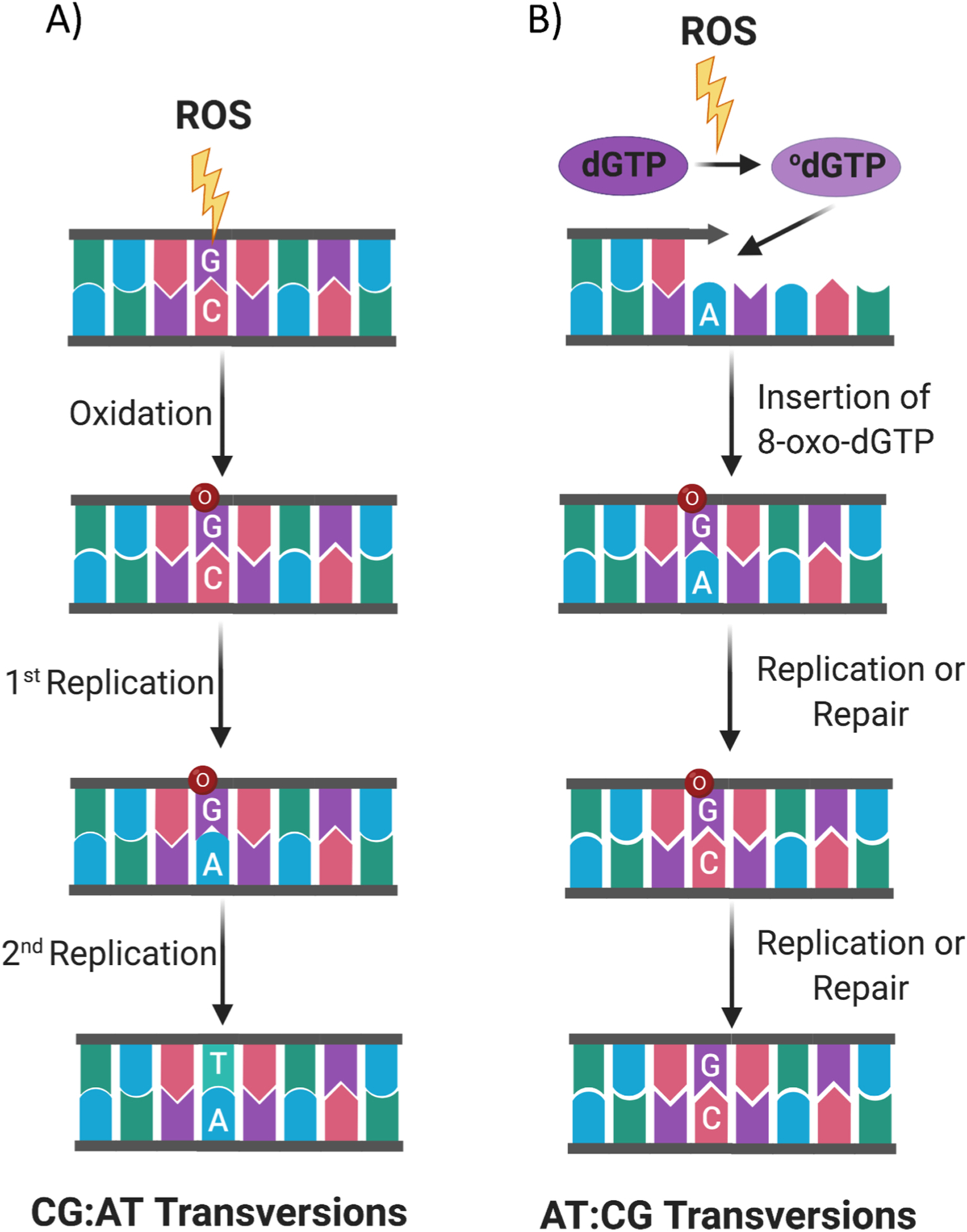Fig. 6.

Two mechanisms of 8-oxodG induced transversions. (A) ROS can directly attack DNA, oxidize 2′-deoxyguanosine and form the dC:8-oxodG base pair. Subsequently, when replication occurs across the DNA region containing 8-oxodG, often the 8-oxodG is erroneously bypassed and this results in the insertion of 2′-deoxyadenosine insertion, forming a dA:8-oxodG base pair. If the dA:8-oxodG mispair is left unrepaired during a second round of replication it will produce a dA:dT base pair leading a dC:dG to dA:dT transversion mutation. (B) ROS can also oxidize dGTP, in the dNTP pool, to 8-oxodGTP, which is then erroneously incorporated during DNA replication, giving rise to the 8-oxodG:dA mismatch. If replication or inappropriate MYH excision of 2′-deoxyadenosine occurs, the 8-oxodG pairs with cytidine. 8-oxodG:dC mispairs are a substrate for OGG1-initiated repair which, in this context, produces the dA: dT to dC:dG mutations (created with biorender.com).
